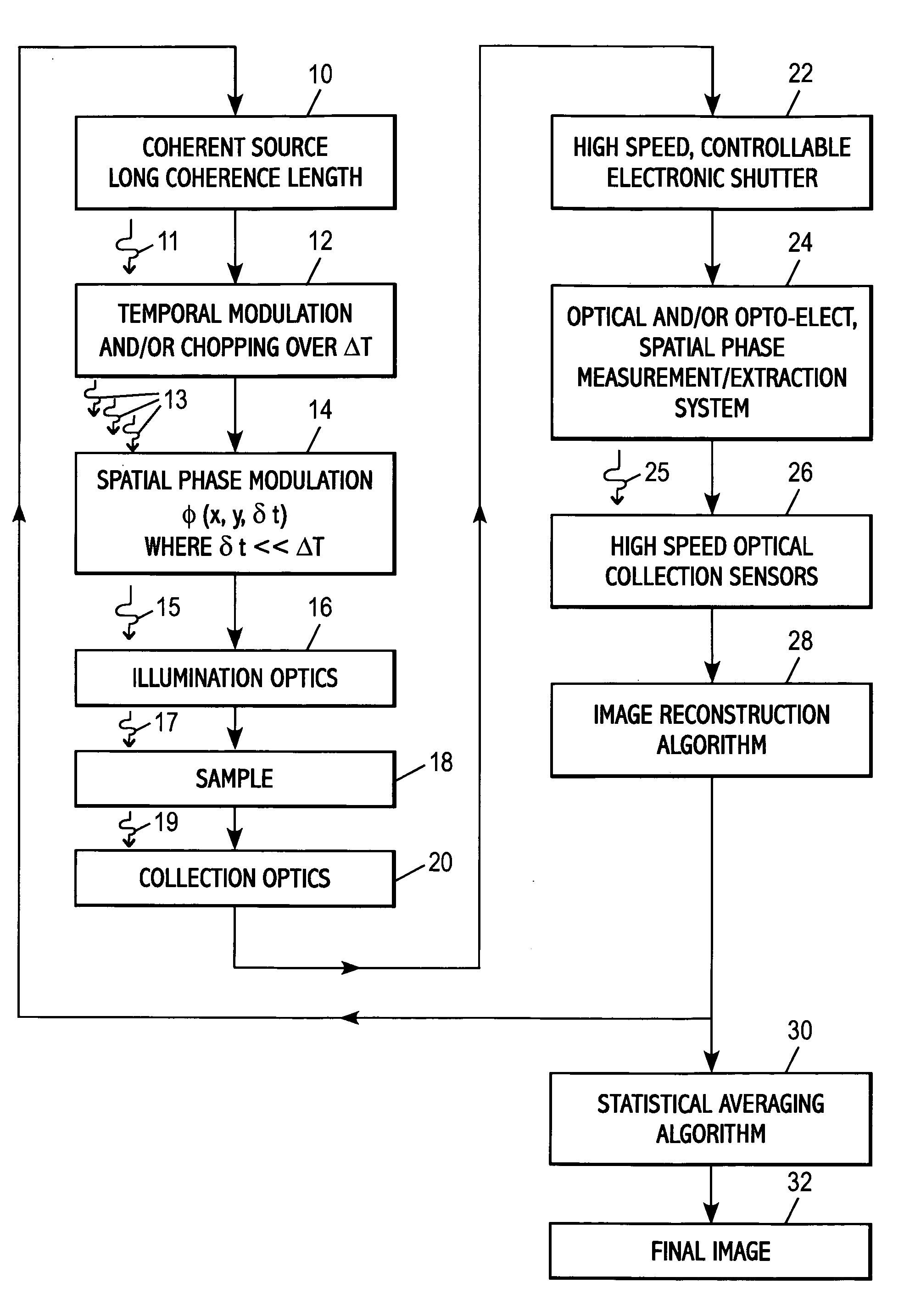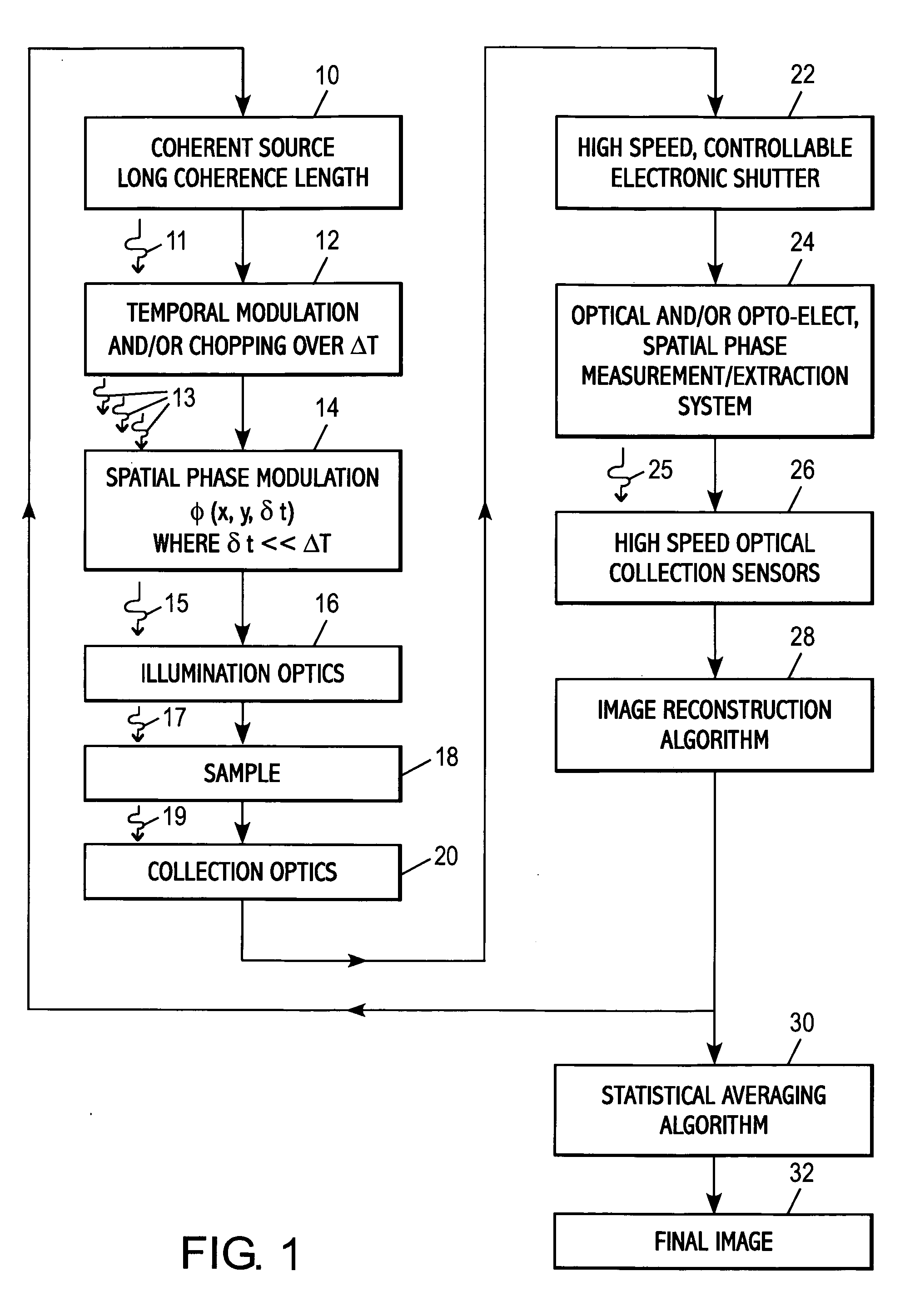Digital imaging assembly & methods thereof
a digital imaging and assembly technology, applied in the field of coherent radiation imaging systems, can solve the problems that foreign contrast agents often harm biological samples, and achieve the effect of effectively eliminating speck nois
- Summary
- Abstract
- Description
- Claims
- Application Information
AI Technical Summary
Benefits of technology
Problems solved by technology
Method used
Image
Examples
Embodiment Construction
[0057]The present invention will now be described with reference to exemplary embodiments to which it is not limited. Variations and modifications will occur to skilled artisans which are encompassed within the present invention as defined in the claims appended hereto.
[0058]FIG. 1 is a block diagram illustrating an exemplary method in accordance with the present invention. A source of coherent radiation 10 provides the coherent wave 11 of radiation to be used to image the sample 18. As used in this specification, the term “coherent radiation” means electromagnetic radiation of the same, or almost the same, wavelength, and with definite phase relationships between different points in the field. See, e.g., page 423 of the “McGraw-Hill Dictionary of Scientific and Technical Terms,” Sixth Edition (New York, N.Y., 2003). Reference may also be had, e.g., to U.S. Pat. Nos. 6,272,095, 6,094,300, 6,055,044, 6,002,499, 5,963,626, 5,754,511, and the like. The entire disclosure of each of thes...
PUM
 Login to View More
Login to View More Abstract
Description
Claims
Application Information
 Login to View More
Login to View More - R&D
- Intellectual Property
- Life Sciences
- Materials
- Tech Scout
- Unparalleled Data Quality
- Higher Quality Content
- 60% Fewer Hallucinations
Browse by: Latest US Patents, China's latest patents, Technical Efficacy Thesaurus, Application Domain, Technology Topic, Popular Technical Reports.
© 2025 PatSnap. All rights reserved.Legal|Privacy policy|Modern Slavery Act Transparency Statement|Sitemap|About US| Contact US: help@patsnap.com



